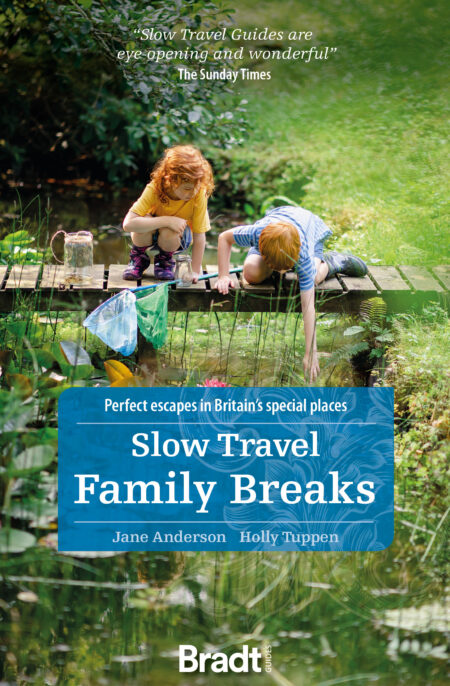Since winning the title of Capital of Culture in 2008, Liverpool has continued to surprise and delight with its museums, galleries and music venues, reinventing and revitalising the city centre without losing touch with its industrial roots.
There are years’ worth of stories to delve into, and institutions like Tate Liverpool and the Liverpool Museum do a good job at bringing it all to life. At heart, of course, this is a music city. As journalist Paul du Noyer once wrote, ‘Liverpool is a busker deep down… When all else fails…this city will sing for its supper.’
Before you arrive, why not get the whole family fired up and enthused by listening to a soundtrack of Liverpool greats including The Beatles, Gerry and the Pacemakers, The Real Thing, The Lightning Seeds, The Coral and, for the pop fans, Atomic Kitten.
Liverpool is, however, by no means all museums and music: surrounded by a tidal river and the sea, the city offers plenty of scope for outdoor adventures that promise excitement for the whole family. Here’s what not to miss.
The Beatles Story
‘Who are The Beatles?’ my youngest asks as we descend the steps down to The Beatles Story. A reminder that it’s always good to prep your kids before any cultural experience. ‘The ones Granddad likes – you know, the old music,’ the eldest retorts before I get a word in. My dad grew up in Liverpool and so The Beatles’ songs are a family staple. Within moments of entering, we’re thankfully all on board with who The Beatles are.
Inside, we pick up audio guides and the kids get activity packs. The museum funnels visitors through various interactive, life-size displays, including an aeroplane (to signify the band breaking America) and a yellow submarine. It’s as captivating as it is surreal, which perhaps neatly sums up the Fab Four.
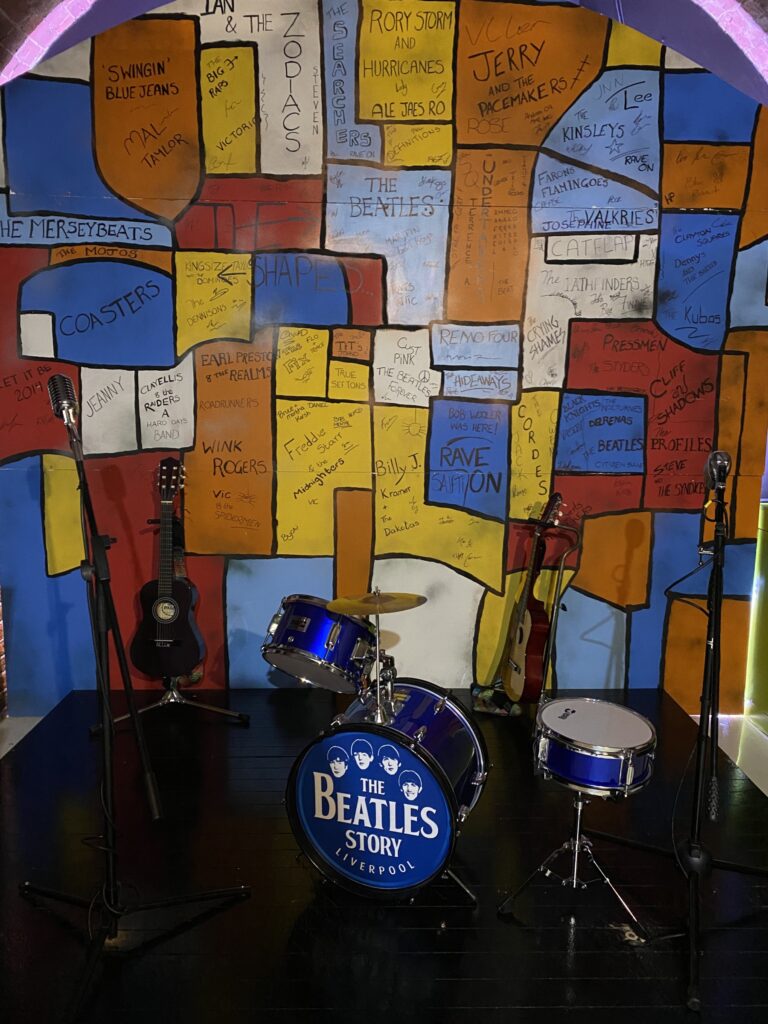
Audio tour on, and John Lennon’s half-sister, Julia Baird, welcomes us on the journey. Throughout the next hour she’s joined by Paul McCartney, Cynthia Lennon (John’s first wife), and the band’s producer, George Martin, often referred to as the ‘fifth Beatle’. The commentary is interspersed with audio and video clips from every era, bringing each stage of the story to life. Within five minutes, everyone is happily absorbed in their own little Beatles world.
Halfway through the tour, we all welcome a sit down in the true-to size mock-up of The Cavern Club, the music venue in Liverpool that ‘broke’ The Beatles. Chairs are arranged in front of a stage and music plays overhead. It’s a good chance to remove headsets and chat about what we’ve seen so far.
The boys ask if we can visit NEMS record store and Hessy’s guitar shop, not realising they no longer exist. ‘Can we go to the Cavern?’ one of the boys asks, not put off by the descriptions of the dingy cellar with ‘sweat pouring off the walls, mingled with disinfectant to get rid of the smell.’
We’re already booked in for a visit later that day as part of another Beatles experience – the Magical Mystery Tour, which takes visitors to famous Beatles’ landmarks around the city. It’s a brilliant complement to the museum if you have the time for both. Nowadays, rather than sweat pouring from the walls, the Cavern Club welcomes families before 8pm. Live acts perform from 11.30am, so it’s a good way for kids to get a sense of Liverpool’s live-music culture.
Incredibly, given the youngest couldn’t remember who The Beatles were an hour ago, enthusiasm lasts until the very end, including lots of questions around why John Lennon was shot. ‘The kids always ask that,’ Nick at the Discovery Centre comments, as I explain why we’re talking about mental health. The Discovery Centre is the finale of the museum, before the Fab Four diner-style café and shop, and the kids can’t believe their luck. Nor can we.
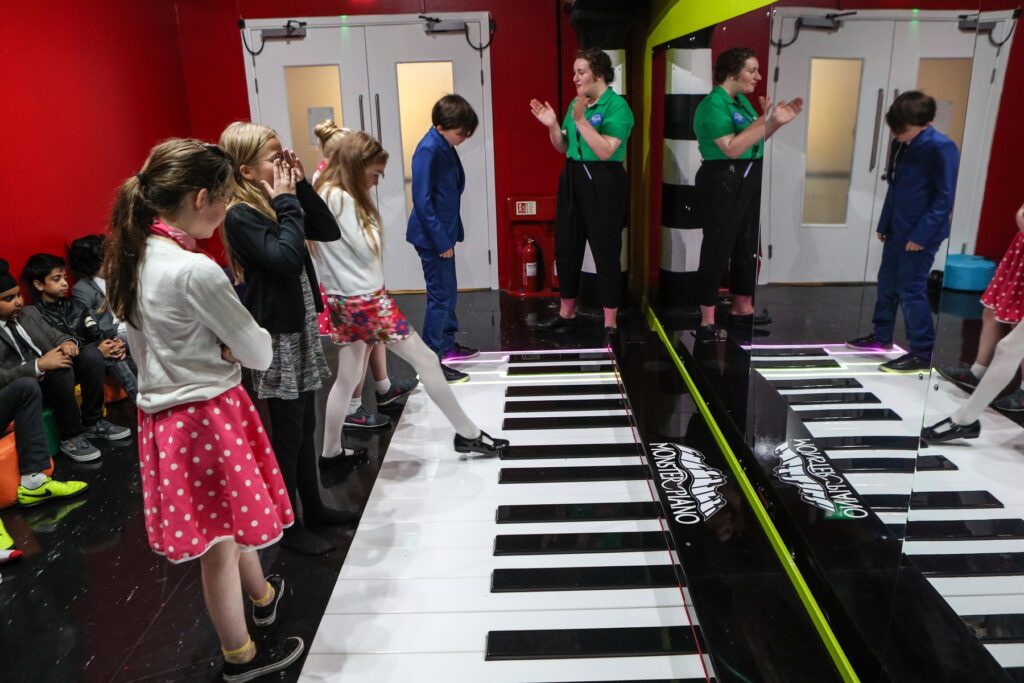
‘Look! Look!’ we all cry, discovering the mini karaoke stage, the giant light-up step-on piano, and a mock record store and player where the kids can choose which records they want to play. At the art station, Nick asks the boys what they’d like to colour – Pop Art renditions of the Fab Four, or psychedelic album covers. Before long, the whole family is lost to mindful colouring.
Although the whole experience takes just two hours, it feels like it will have a lasting impression. Not only do we all know a lot more about the history of the city, eager now to find Penny Lane, Strawberry Fields and Walton Street, but the boys have a twinkle in their eye as they ask if they can buy some guitar music. Perhaps they no longer believe football is the only way to international stardom.
City centre
If you’re travelling by train, you’ll most likely arrive in the heart of the city at Liverpool Lime Street. Opposite the station, the grand and slightly intimidating St George’s Hall is home to the History Whisperer, a little further north, the World Museum offers five floors of natural history and science, and has a planetarium. Nearby, the impressive Central Library features a huge kids’ section, and the Walker Art Gallery is packed with works from Degas to Hockney.
Between Lime Street Station and the waterfront, Liverpool ONE is a huge shopping mall. Bypass the chain stores and head to the eastern side of the mall, where St Johns Beacon Viewing Gallery, at the top of a 400ft high 1960s radio tower, offers 360° views of the city and the Mersey.
Moments from Liverpool Central Station, south of the mall, the Bluecoat contemporary arts centre is housed in a beautiful 300-year-old building. There’s plenty for families here: previous events have included Liverpool’s first comedy club for kids and an exhibition on colonialism designed by young Liverpudlians.
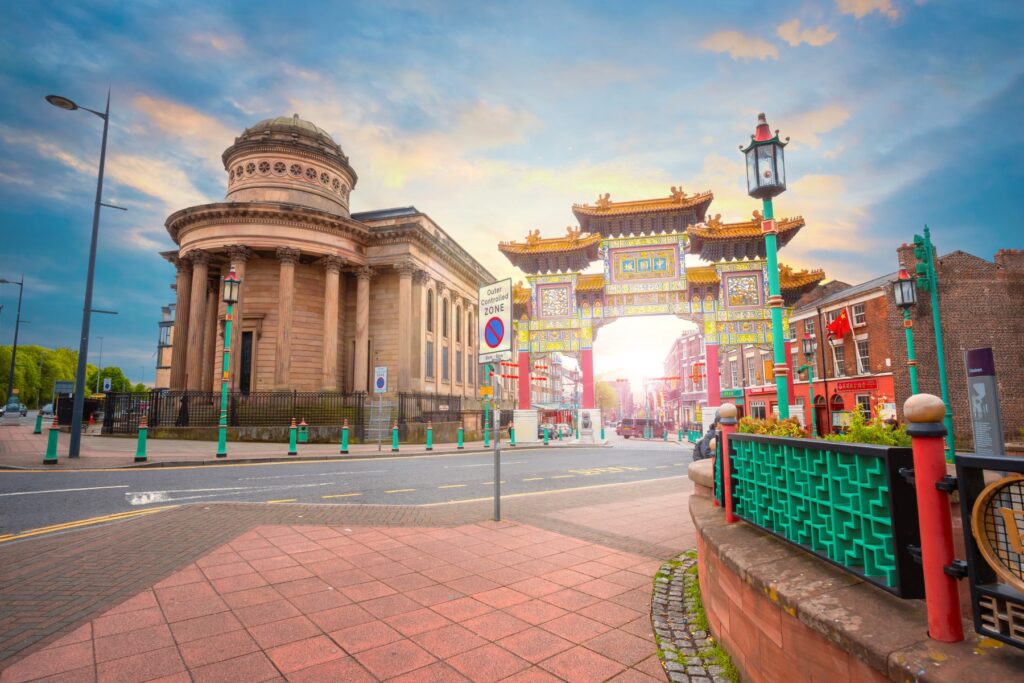
Heading southeast, enter Liverpool’s thriving Chinatown through the huge traditional arch adorned with dragons at the top of Nelson Street. This area was home to the first Chinese community in Europe, and although it is no longer the largest, its two streets are packed with highly regarded restaurants – Yuet Ben is recommended.
Not far from here, to the south, the Baltic Triangle is mostly taken up by trendy late-night bars and markets, but kids will enjoy the huge murals and skateboarders along Jamaica Street. The Baltic Triangle is also the starting point for theatrical Shiverpool ghost tours; these are best suited to kids over nine years old, depending on the child.
Further north, aptly named Hope Street links the city’s two cathedrals, one Catholic and one Anglican (the largest Anglican cathedral in Britain), and is surrounded by attractive Georgian streets. On the third Sunday of every month, a Makers Market floods the streets with the best local traders.
A couple of miles from the city centre, Sefton Park covering 235 acres, is the best of Liverpool’s Victorian parks. Here, the Palm House hosts the city’s botanical collection, including 20 varieties of palm and 23 types of orchids. The park also has a boating lake and a ‘fairy glen’ – a series of waterfalls tucked away in the northeast corner.
The waterfront
Water creeps into the city from the Mersey in all directions, creating a grid of waterways and docks now packed with museums, galleries, historical buildings and restaurants, with ample space to run about. The city’s Victorian docks and famous skyline earnt the city UNESCO World Heritage Status in 2004, a status that was controversially stripped in 2021 after the UNESCO committee decided new development had destroyed the area’s heritage – an interesting debate that makes visiting and contemplating the old and the new even more compelling.
Heading straight for the Mersey from Lime Street Station, you hit the Royal Albert Dock. The converted warehouses here are mostly occupied now by restaurants and bars, but you’ll also find Tate Liverpool and the Merseyside Maritime Museum – both free to visitors. Exhibitions in the latter cover the building of the Titanic, the intriguing and sometimes bizarre history of smuggling, and stories from seafaring Liverpudlians throughout the ages. In the same building, the International Slavery Museum is an incredibly moving experience, recounting Liverpool’s extensive role in the 18th- and 19th-century slave trade.
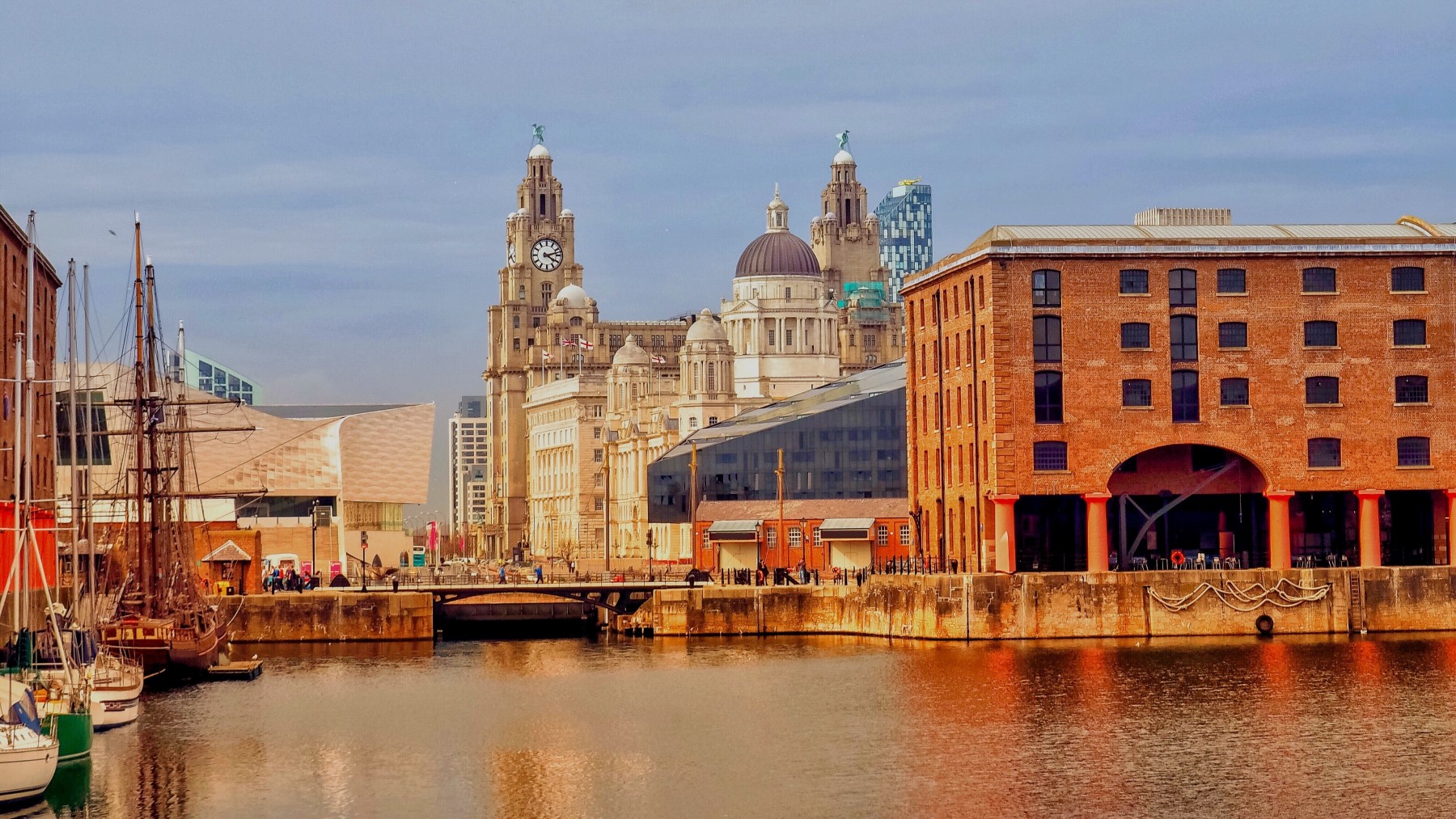
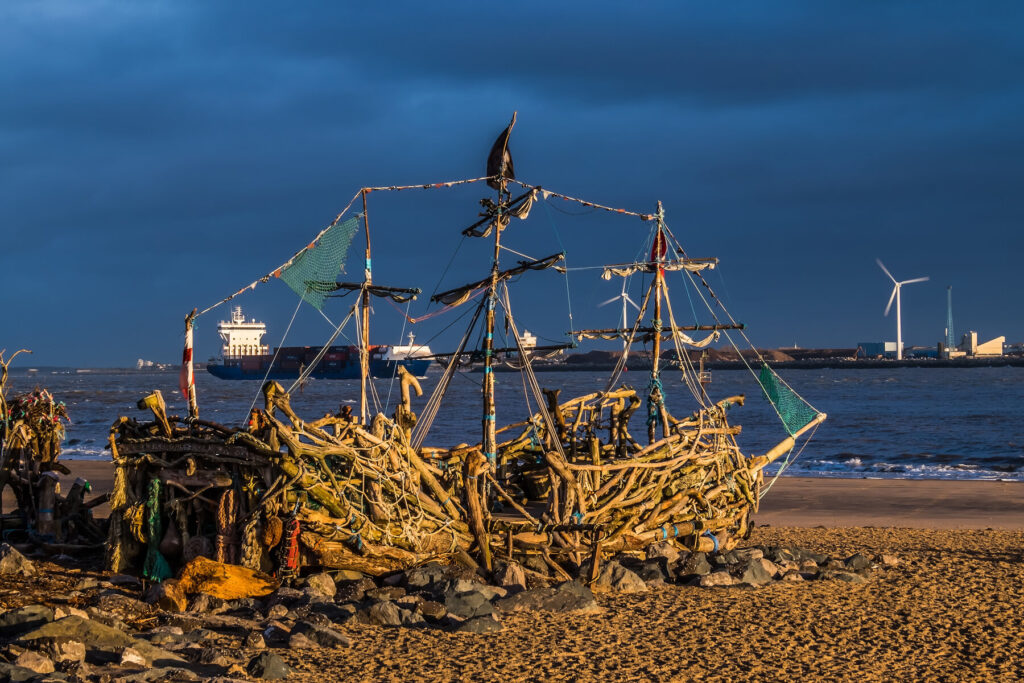
On the south side of the docks is the entrance to The Beatles Story and Wild Shore Liverpool, an inflatable aqua course along a canal. Further south, on Queen’s Dock, the not-for-profit Liverpool Watersports Centre offers paddleboarding, open-water swimming, kayaking and canoeing for a wonderfully active way to explore the city’s historic canals and docks (children – aged between five and 16 – must be accompanied by an adult). The centre also has one of the country’s only wheelchair accessible powerboats.
If you feel a little squeamish about leaping into city-centre waterways, be assured that Liverpool’s marinas recently earnt Blue Flag status. This is partly thanks to the work of the Canal and River Trust, whose website provides visitors with audio walks, maps and explorer packs to discover the Liverpool Canal Link, a 1.4 mile historical route from Albert Dock north to Stanley Dock.
The Museum of Liverpool, north of Albert Dock, is an architectural showpiece between the Royal Liver Building (Europe’s first skyscraper) and the waterfront. There’s a play zone for under-six-year-olds, Little Liverpool, with an alphabet of Liverpool history and dock-themed water play. The Wondrous Place gallery showcases the city’s cultural and creative history, from football rivalries to local celebrities.
Footsteps away, you can hop on a 50-minute River Explorer Cruise to see the sights from the river. The ferry makes a stop at Woodside, so this a great way to head across to explore The Wirral.
Practicalities
Family-friendly accommodation in Liverpool
Hope Street Hotel
Occupying a Cheshire pink brick building in the city’s Georgian Canning neighbourhood, Hope Street Hotel is an independent boutique hotel with heaps of style and character. It’s near the Everyman theatre, known for innovative plays to suit all ages, and the Liverpool Philharmonic Hall. Toys, colouring kits and an in-house cinema help entertain the kids.
Pullman Hotel
Chain hotels tend to feel a bit soulless, but the Pullman is in a great location: on the waterfront close enough to the action to enable you to hop in and out but far away enough not to suffer from noisy late-night bars. There are connecting rooms for families and a large lobby, bar and café space for downtime.
Family-friendly restaurants in Liverpool
The Bagelry
Rainbow bagels, vegan bagels, chocolate-cake-topped bagels and donut bagels; bagels come in all shapes and sizes at this cute café in Chinatown, which also serves good coffee. There are tables inside, or get a take-away and head down to the docks to enjoy eating on the Mersey.
Duke Street Market
This lovely indoor market, conveniently located in a converted 100-year-old building on Duke Street near the city centre, provides plenty of options for weary, footsore sightseers. Vendors and restaurants include Barnacle, a ‘Scouse brasserie’ serving Merseyside produce.
More information
For more information, check out Jane Anderson and Holly Tuppen’s guide:
